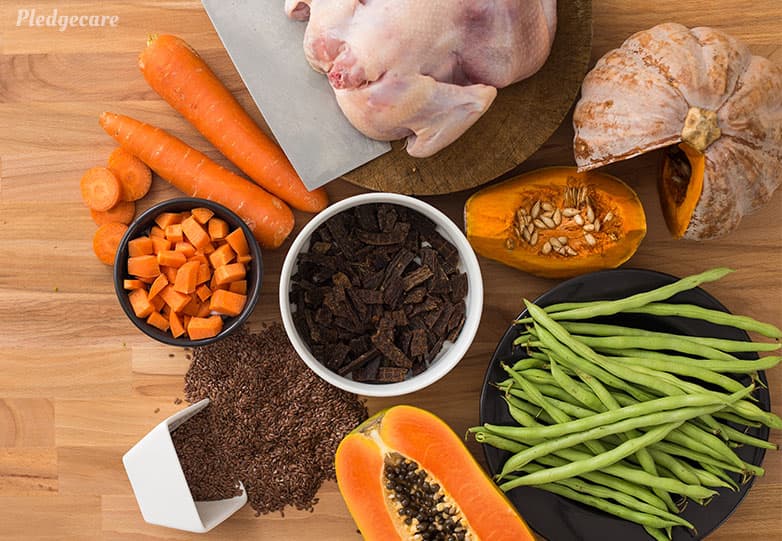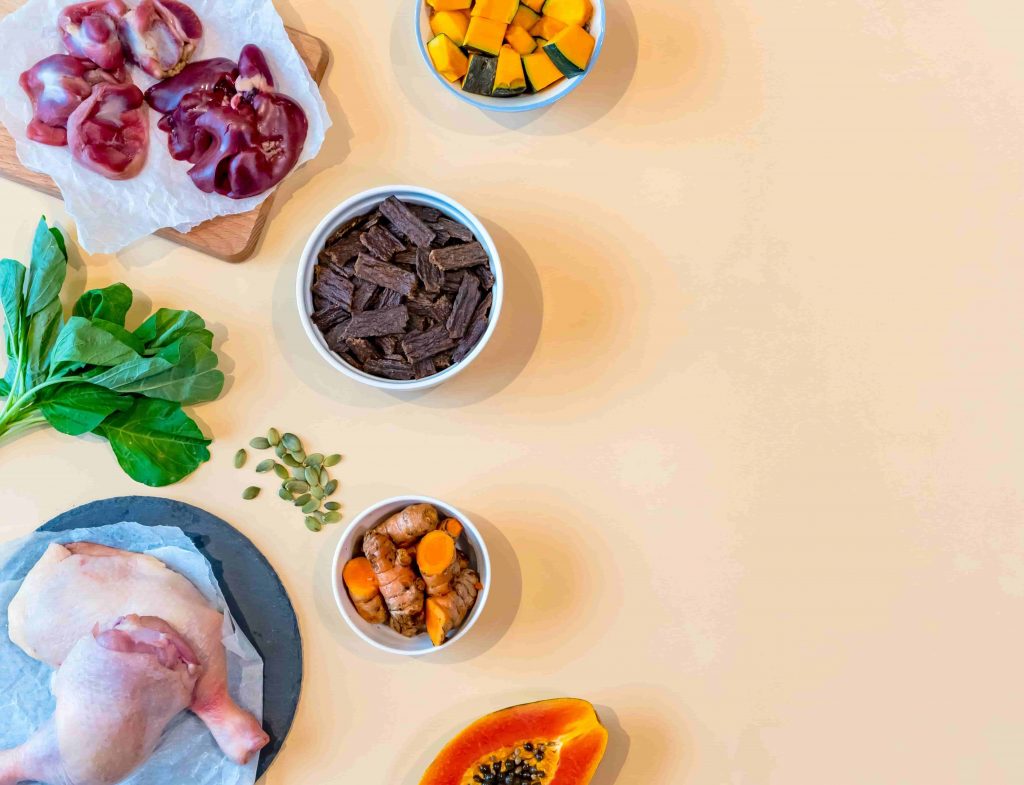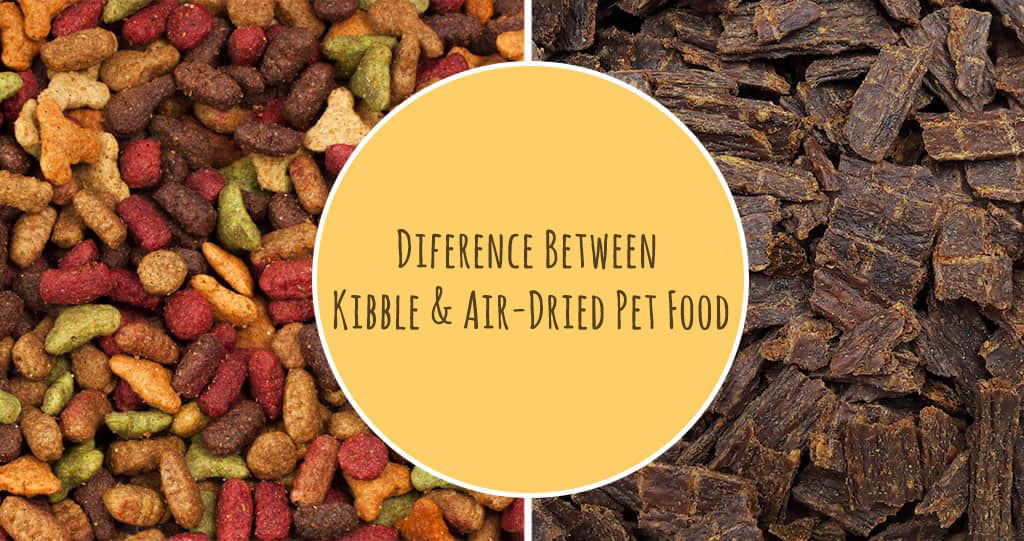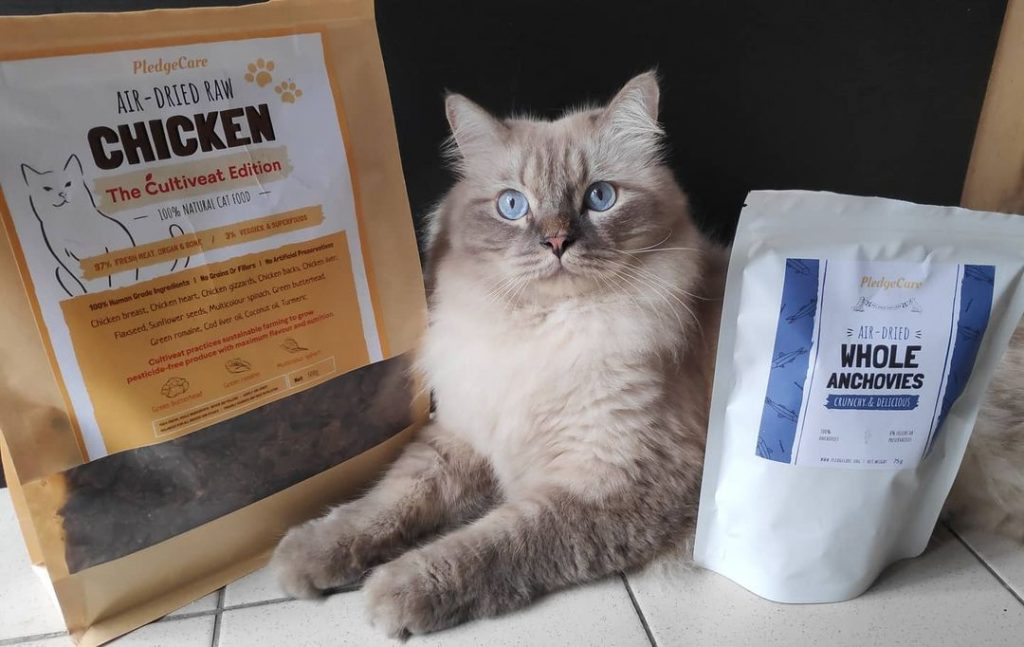Air-drying is one of the most ancient methods of preserving food. For thousands of years, travellers would bring dried fish and meat on long voyages because of the superior shelf-life. But times have changed.
Nowadays, we have machines that do the drying process. These machines have a unique property. They can generate low heat air that evaporates moisture from the food. This may sound complicated – but it’s not!
And with more pet parents opting for healthier alternatives than regular kibble, air-dried foods are becoming a popular choice among dog and cat parents.
But what is the difference between kibble and air-dried pet food? Let’s start out with explaining a little more about air-dried pet food:
What is air-dried / dehydrated pet food?
To put it simple; Air-drying is removing water through low heat.
A dehydrator is the name of the machine and they come in all sizes – from the ones in our kitchen cabinet to large commercial units that fit whole buildings.
Air-drying has gained more popularity over the years because of its ability to protect heat-sensitive nutrients. It’s also an effective way to get rid of potential bacterias and prevent yeasts and mould.
Whether it’s for a healthy snack or a complete diet, air-drying helps to retain the vital nutrients that keep our pets healthy and energized.
Alright, we think you get it. Now let’s explore what the differences between kibble and air-dried diets are:

Kibble vs. Air-dried pet food
The picture above is air-dried pet food placed in a bowl. If you zoom in a little, you can tell it looks very different from kibble. And there’s a good reason for that.
It’s because of the vastly different manufacturing methods.
Normal kibble is manufactured in a process called “extrusion”. The extrusion process is like this:
- Many ingredients are processed/cooked even before reaching the factory (e.g. Meat-meals). That means that plenty of nutrients are already reduced or gone;
- The processed ingredients are then heated again with steam to several hundred degrees, and put under high pressure until it forms an even paste.
- This paste is then cut into even shapes and put in a high-temperature drying oven.
- Finally, the product gets packaged in bags and leaves the factory.
As you can tell, extrusion is extremely effective in creating a lot of food in a very short time, but it comes at a cost. It destroys many of the vital nutrients your pet needs because of the many rounds of cooking/heating, extreme temperatures and pressure.
The levels of protein, vitamins and antioxidants are all decreased due to the high temperatures, which significantly lowers the overall nutritional value of the food.
But is there no nutrients left then? Well, there is, but it originates from a lot of artificial preservatives, vitamin supplements etc. This is to “balance” out the lost nutrients.
Another thing is that commercial pet food extruders often can’t tolerate a lot of fresh ingredients. The moisture content is too high, which forces manufacturers to use highly-processed and rendered ingredients such as meat meals. These ingredients have much lower nutritional value than their fresh counterparts.
You can learn more about how kibble is made in the video below:
In contrast, air-drying protects nutrients
Vitamin C, E, B-1, B-6, B-9, antioxidants and Omega 3 & 6 fatty acids are all very sensitive to heat. These vitamins are often destroyed under high-temperatures, which is the case with a normal kibble.
In contrast, air-drying uses much lower temperatures.
The ingredients are dried without harming the naturally occurring nutrients and enzymes in the food. That’s why you typically don’t see long ingredient lists on air-dried pet food products.
Due to the low temperatures, air dried pet food is considered as nutritious as raw foods, barf diets and homecooked meals since the ingredients retain the same nutritional quality as in their fresh state.
So to recap: Feeding air-dried provides your pup or cat with the same nutrition as a raw diet but easy to handle like kibble.

Fresh beats kibble
Air-drying allows for much higher inclusions of fresh ingredients, such as whole chicken, spinach, pumpkin and papaya that help your pet thrive.
If you’re interested in learning more about feeding fresh, you can find out more on our online pet store.
You may like:
- 5 Misleading Label Tricks Pet Food Brands Use.
- Top 5 Benefits of Fish for Dogs.
- The Best Dog-Friendly Places in KL & PJ.
PledgeCare’s blog posts are designed to help and inspire pet parents who wish a healthier every day for their pets. If you’re curious about our air-dried raw, Malaysian, human-grade and super healthy pet food, check out: https://pledgecare.org/recipe/
Sign up for our newsletter and get RM15 off your first order of our healthy foods and treats:



What is the possibility of bacteria contamination to other sources when you are rehydrating air-dried and freeze dried dog food?
Pingback: 11 Best Cat Foods in Singapore for a Healthier Cat | Best of Pets 2022
Pingback: 12 Best Cat Foods in Malaysia for a Happier Cat | Best of Home 2022
Hello! What are the temperatures involved in the air-drying process and how long does it typically take to dry a batch?
Hi Roxy! Air-drying typically involves temperatures below 90°C 🙂 In order to achieve a stable moisture content level to avoid bacteria growth, many companies dry their food for more than 10 hours (and we’ve seen certain manufacturers drying for up to 48 hours). I hope this answers your question, otherwise, feel free to ask!
Hi , do i need to soak the food ? As i need to add in some Liver-tune powder for my pet ? It does not really look like the normal freeze-dried raw food which i fed my dog .
Hello Patricia! It’s not necessary to soak it. However, some people do as their dogs cannot deal with the dry and flaky texture of air-dried. And yes, since it is air-dried, it can be different from freeze-dried raw food.
Pingback: Dealing With An Anxious Dog In a Big City - PledgeCare Malaysia
Pingback: 5 Misleading Label Tricks Pet Food Brands Use - PledgeCare Malaysia